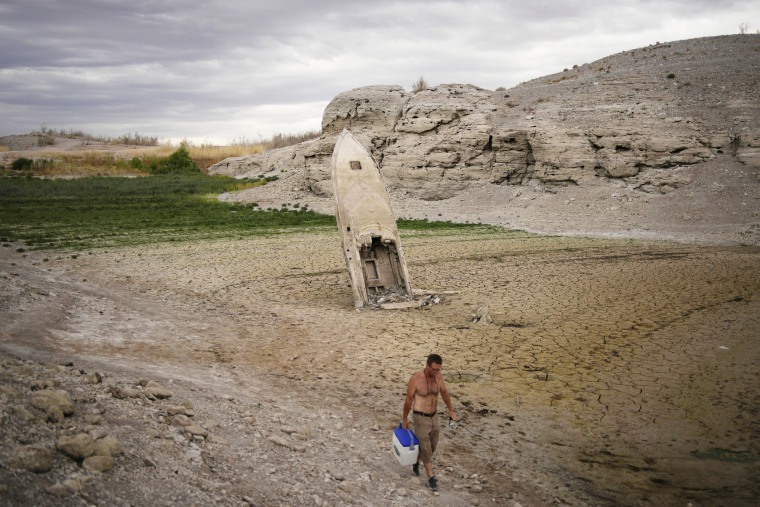Little relief is expected for farmers, ranchers and reservoirs this winter in the Western U.S., as extreme drought is forecast to continue plaguing the region.
That’s according to forecasters with the National Oceanic and Atmospheric Administration, who predict “widespread extreme drought to persist across much of the West,” according to Jon Gottschalck, chief of the operational prediction branch at NOAA’s Climate Prediction Center.
NOAA on Thursday outlined its expectations for winter conditions across the U.S.
“We’re going on our third year of this extreme drought for much of the Western U.S.,” said Brad Pugh, the operational drought lead with NOAA’s Climate Prediction Center. “It’s adversely affecting agriculture, increasing wildfire danger and has impacts on tourism as well.”

Drought conditions are at their most extreme in Central California, where NOAA predicts warmer temperatures and less than normal precipitation throughout the winter. The same prediction applies to much of the South, including the Gulf Coast.
Drought conditions this winter are expected to impact the middle and lower Mississippi River valley as well, where low water levels have already led barges to get stuck in mud and caused disruptions to shipping and recreational boating.
Nearly 50% of the U.S. is in drought, according to the National Integrated Drought Information System, and more than one-third of the country’s population lives in areas affected by drought.
Drought conditions have already drained reservoirs critical for drinking water supply, forced cutbacks on water use in the Colorado River and threatened farmers’ livelihoods.
NOAA is predicting a third consecutive winter of La Niña, an atmospheric pattern that drives the probability of precipitation. It’s only the third time on record that three seasons of La Niña have occurred consecutively.
New research suggests climate change might be influencing circulation in a way that favors La Niña in the short term.
At higher latitudes, the pattern could make for a wet, frigid winter.
NOAA is expecting below-normal temperatures and wet conditions in the Pacific Northwest and the western Great Lakes, which could bring more snow to both regions. That should help relieve drought conditions in those areas.
The Northern Rockies and the Ohio Valley are also expected to receive more than their usual dose of rainfall.
The Atlantic seaboard can look forward to a warmer winter, if NOAA’s predictions hold. However, the agency’s seasonal outlooks are based on probabilities and are not always reliable indicators of what winter will bring.
Source: | This article originally belongs to Nbcnews.com










